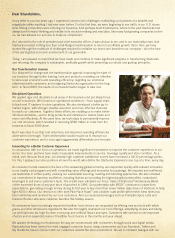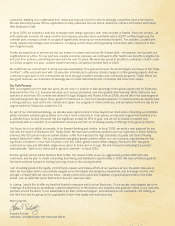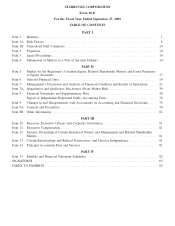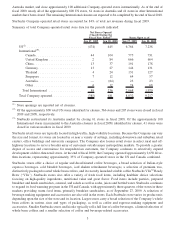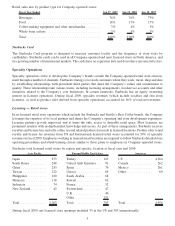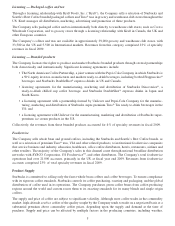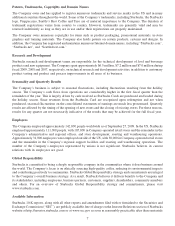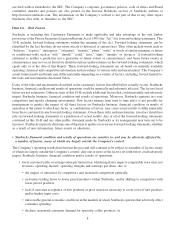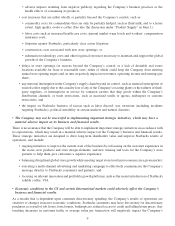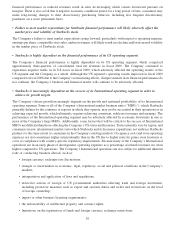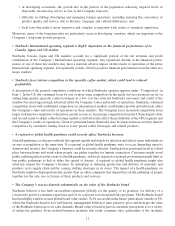Starbucks 2009 Annual Report Download - page 9
Download and view the complete annual report
Please find page 9 of the 2009 Starbucks annual report below. You can navigate through the pages in the report by either clicking on the pages listed below, or by using the keyword search tool below to find specific information within the annual report.PART I
Item 1. Business
General
Starbucks is the premier roaster and retailer of specialty coffee in the world. Starbucks Corporation was formed in
1985 and its common stock trades on the NASDAQ Global Select Market (“NASDAQ”) under the symbol “SBUX.”
Starbucks (together with its subsidiaries, “Starbucks” or the “Company”) purchases and roasts high-quality whole
bean coffees and sells them, along with fresh, rich-brewed coffees, Italian-style espresso beverages, cold blended
beverages, a variety of complementary food items, a selection of premium teas, and beverage-related accessories
and equipment, primarily through Company-operated retail stores. Starbucks also sells coffee and tea products and
licenses its trademark through other channels such as licensed retail stores and, through certain of its licensees and
equity investees, Starbucks produces and sells a variety of ready-to-drink beverages. All channels outside the
Company-operated retail stores are collectively known as specialty operations.
The Company’s objective is to maintain Starbucks standing as one of the most recognized and respected brands in
the world.To achieve this goal, the Companyplans to continue disciplined global expansion of its retail and licensed
store base, to introduce relevant new products in all its channels, and to selectively develop new channels of
distribution. The Company’s Global Responsibility strategy and commitments related to coffee and the commu-
nities it does business in, as well as its focus on being an employer of choice, are also key complements to its
business strategies.
Segment Financial Information
Starbucks has three reportable operating segments, and each segment provided the indicated percentage of total net
revenues for fiscal year ended September 27, 2009 (“fiscal 2009”): United States (“US”) (73%), International (19%)
and Global Consumer Products Group (“CPG”) (8%). In the fourth fiscal quarter of 2009, the Company changed the
composition of its reportable segments. The US foodservice business, which was previously reported in the US
segment, is now reported in the CPG segment, as a result of internal management realignments within the US and
CPG businesses. Segment information for all prior periods presented has been revised to reflect this change.
The US and International segments both include Company-operated retail stores and certain components of
specialty operations. Specialty operations within the US include licensed retail stores and other initiatives related to
the Company’s core business. International specialty operations primarily consist of retail store licensing operations
in nearly 40 countries and foodservice accounts in Canada and the United Kingdom (“UK”). The International
segment’s largest markets, based on number of Company-operated and licensed retail stores, are Canada, Japan and
the UK. The CPG segment includes packaged coffee and tea, and other branded products sold worldwide through
channels such as grocery stores, warehouse clubs and convenience stores, and US foodservice accounts. CPG
operates a significant portion of its business through licensing arrangements and joint ventures with large consumer
products business partners. This operating model leverages the business partners’ existing infrastructures and as a
result, the CPG segment reflects relatively lower revenues, a modest cost structure, and a resulting higher operating
margin, compared to the Company’s other two reporting segments, which consist primarily of retail stores.
Financial information about Starbucks segments is included in Note 18 to the consolidated financial statements
included in Item 8 of this Annual Report on Form 10-K (“10-K” or “Report”).
1



